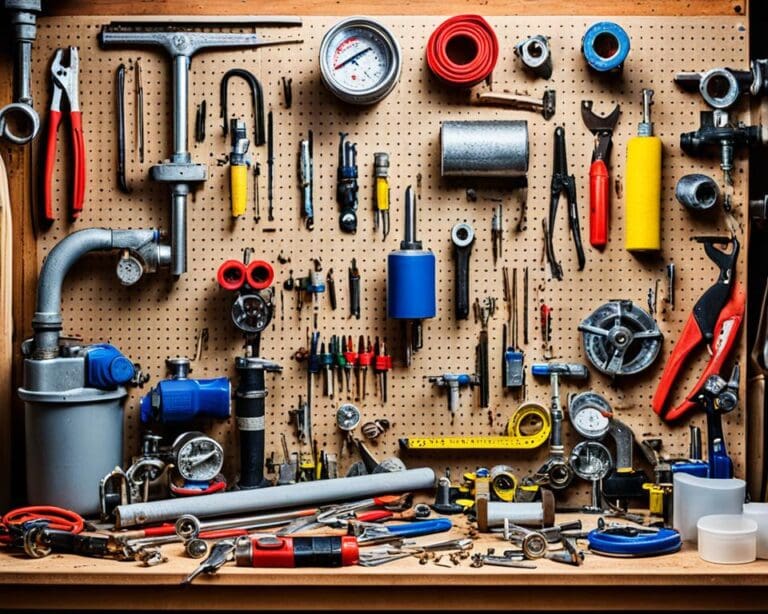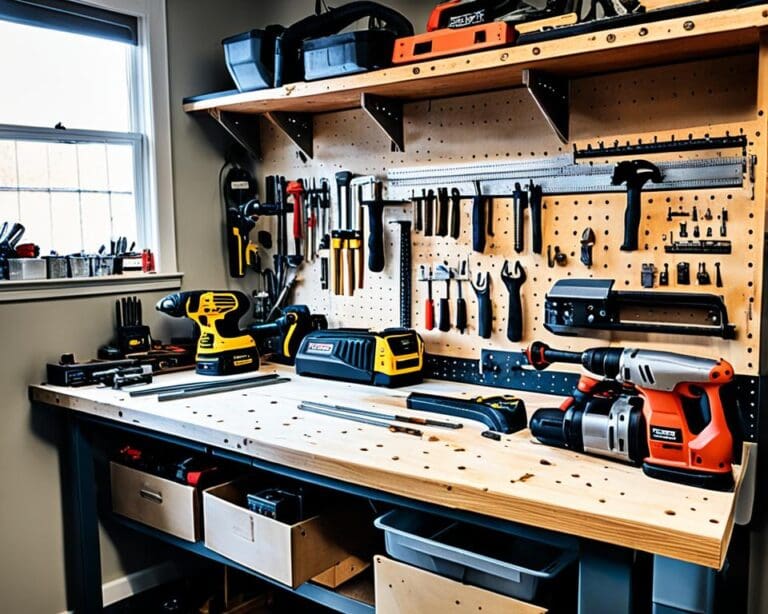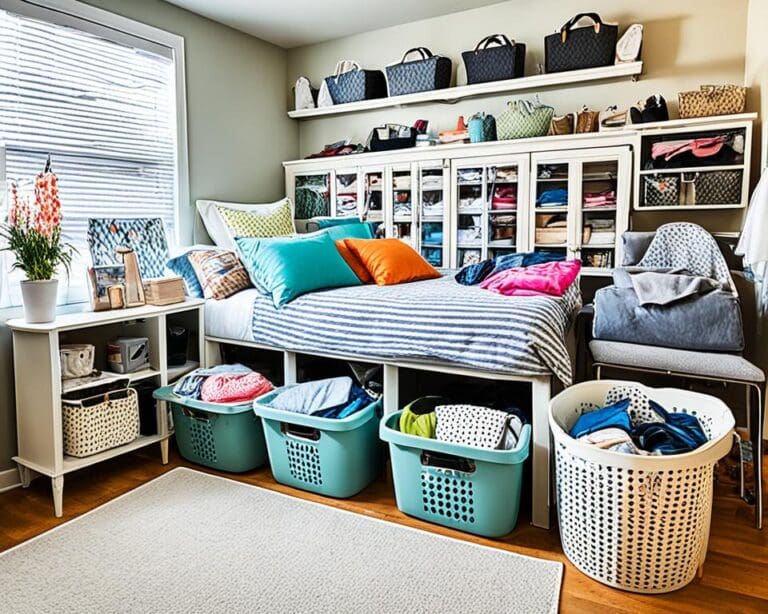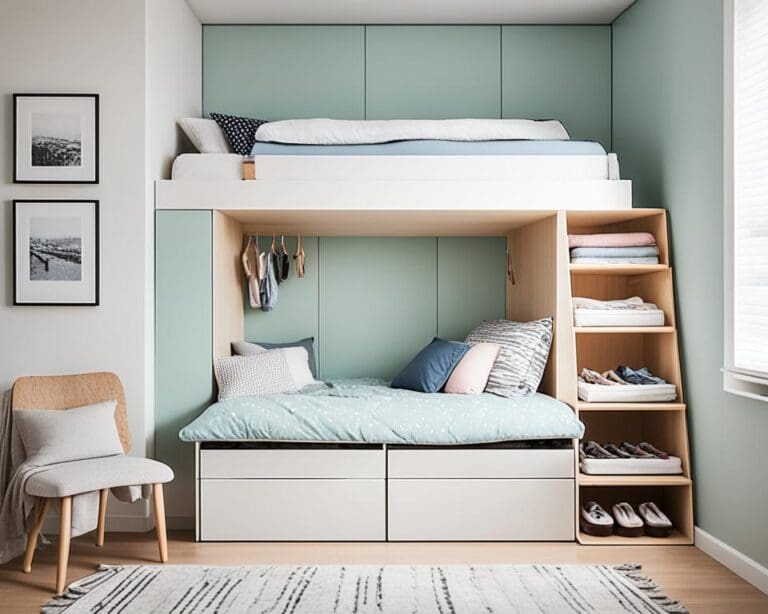An efficient workspace boosts productivity and workflow. With more people working remotely, good office organization is key. It helps reduce distractions and make things run smoother.
A survey by McKinsey & Co. in 2020 found that many companies automate to improve. About 66% of them have automated at least one process. This shows organizing your workspace is crucial. Using smart organization tips can cut down clutter. This makes it easier to focus and succeed.
Good organization helps you manage tasks better. It makes your work quality better too. For example, keep emails sorted by client or project. A study by Kofax shows we spend almost 40% of our time searching for info. An organized space can save time and boost your work level.
Understanding the Importance of an Organized Workspace
An organized workspace is vital for good productivity. A messy area can lower focus and efficiency, leading to bad results. Disorganization can cause wasted time and poor communication. This often makes workers rush decisions due to too much work. A good organization plan can reduce stress and improve work quality.
The Impact of Disorganization on Productivity
Looking for important documents or tools can take up too much time. Studies have found that 60% of workdays are spent on activities that aren’t the main focus. This leaves little time for important tasks. It also lowers work quality and increases stress for employees.
- Overwhelming workloads lead to hasty decisions and increased stress.
- Regular decluttering reduces distractions and boosts creativity.
- Establishing clear task management processes helps in prioritizing high-impact projects.
Benefits of a Well-Organized Office
Organizing an office brings better efficiency and morale. A tidy workspace makes work smooth, keeps info together, and helps team members communicate better. Features like centralized info spots reduce confusion. Tools for managing projects track what needs to be done effectively.
- Creating designated storage spaces promotes workflow and reduces frustration.
- Using reusable project templates prevents oversights and facilitates smoother project launches.
- Integrating business solutions into one unified platform reduces context-switching and supports focus.

Office Organization Tips for Better Workflow
A clean desk is just the start to better workflow. To really boost productivity, you need a good plan for organization. This includes a smart filing system and clear process for managing tasks. These steps help make your workspace organized.
Implementing an Efficient Filing System
Organizing your space well begins with a proper filing system. Use color-coded folders to make finding documents easy. This cuts down time spent looking for important papers. Also, filing regularly keeps paperwork from piling up. This helps employees stay focused on main tasks. Drawer dividers and pegboards are great for keeping desks tidy. Around 68% of businesses use storage solutions to stay organized.
Creating Clear Task Management Processes
It’s important to have clear processes for managing tasks. Tools like to-do lists or software can save time and lower stress. This boosts work output. Knowing when you work best and planning tasks for those times is smart. The Eisenhower Matrix helps teams figure out what to do first. This method makes sure everyone knows what they should be doing. Setting realistic deadlines helps keep productivity up and stress down. It also keeps the business running smoothly.
Strategies for Optimizing Workspace Efficiency
Optimizing workspace efficiency is key for any group wanting to boost productivity. This section talks about using automation tools and good time management to make a work area more efficient. Let’s dive into how these strategies can help.
Utilizing Automation Tools to Streamline Processes
In today’s quick world, automation tools are vital for better workflow. Companies using these tools see a big rise in how well they do. These tools cut down on repeat tasks and free up time for more important work.
- Automation cuts down on the time needed for things like entering data and planning.
- Using automation tools with current software, like ERPs and CRMs, makes workflow better.
- Making documents digital makes it easier to work together smoothly with the team.
Businesses can get better by using tools that make talking, managing projects, and tracking progress simpler. These tools are not just about saving money. They let workers do more meaningful tasks.
Effective Time Management Techniques
Using good time management methods is crucial for making workspaces more efficient. Strategies like setting reminders and sorting tasks can lower the pressure of too much work.
- Sort tasks by importance to make sure key projects get the focus they need.
- Delegate tasks well, giving them to people who do best in those areas.
- Take regular breaks to keep being productive all day.
Studies show a lot of workday time goes to things we don’t need to do. To avoid this, it’s important to make task lists clear and use the right tracking. Training employees well can turn into chances for them to grow. This keeps everyone motivated and efficient.
Decluttering and Minimalist Office Design
A decluttered office helps people work better. A simple office design cuts down on distractions. This makes it easier for employees to focus on their main tasks. Throwing out things that aren’t needed boosts their ability to do well. A neat and tidy workspace also makes stress go down. This leads to better mental health and clear thinking.
Minimalist offices spark creativity. With less around to distract them, people’s thoughts can wander. This helps bring out new and exciting ideas. Using calm colors like white, grey, or beige makes the office feel peaceful. And letting in lots of natural light makes the space bright without too much artificial light.
Choosing the right furniture is key in a minimalist office. Smart, space-saving items like wall-mounted storage help keep things organized. Cutting down clutter isn’t just about physical stuff. It also means turning paper files into digital files to save space. In the end, a minimalist approach makes offices not only look better but also makes working there better.









